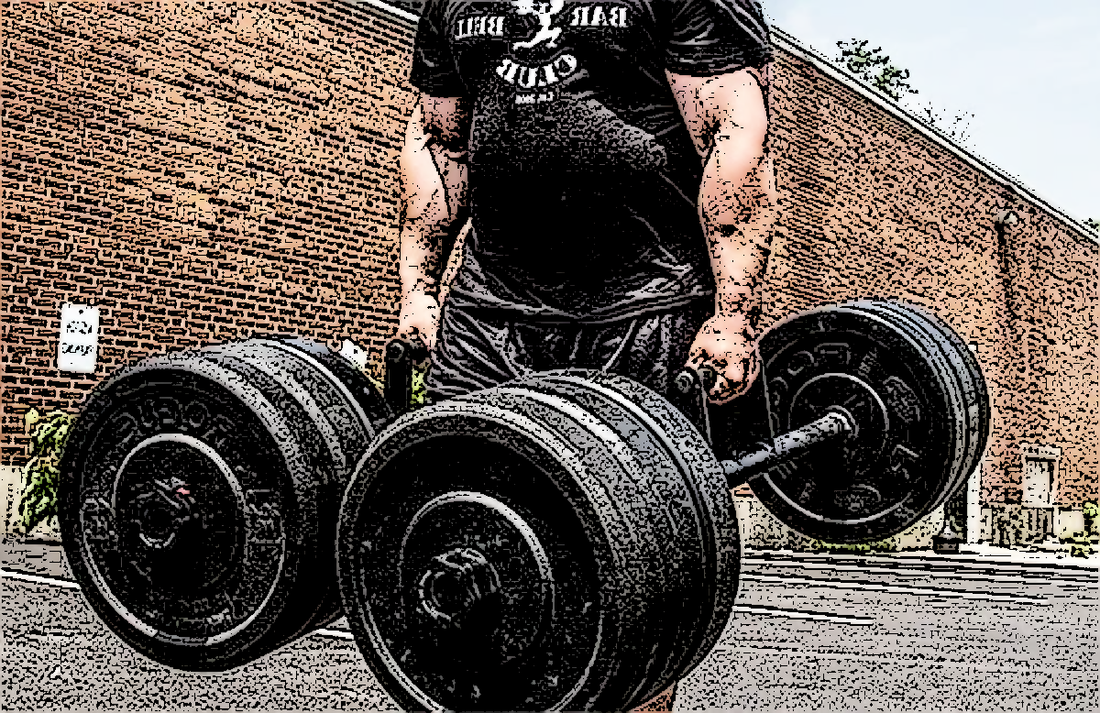Strength, Power, muscular size, there are all journeys that involve exploring various exercises and training methodologies to achieve a good baseline in health and well-being. Weighted walking, a seemingly simple yet highly effective form of exercise, has gained popularity for its potential to enhance General Physical Preparedness (GPP). In this post, we dive into the numerous benefits of weighted walking and its profound beneficial impact on overall fitness.
Weighted walking, at its core, involves adding resistance to the act of walking. This resistance can take various forms, such as wearing a weighted vest, carrying dumbbells, using ankle weights, or even utilising specialised equipment designed for this purpose (such as an only Westside barbell staple like the sled). The additional weight introduces an element of challenge to the otherwise familiar activity of walking, reaping a plethora of benefits for both physical and mental well-being.
Benefits of Weighted Walking
- Muscle Engagement and Development: One of the primary advantages of weighted walking is its ability to engage and develop various muscle groups. The added resistance forces the muscles to work harder, leading to increased activation and growth. Muscles in the legs, glutes, and core are particularly targeted during a weighted walk, contributing to improved strength and endurance.
- Caloric Expenditure and Weight Management: Walking is a fantastic cardiovascular exercise on its own, but when you add resistance, the intensity increases. This elevated intensity results in a higher calorie burn during the activity. Weighted walking can be an effective addition to a weight management or fat loss program, as it boosts the overall energy expenditure without the high impact associated with some other forms of exercise.
- Bone Density Improvement: Weight-bearing exercises are known to have a positive impact on bone health, and weighted walking is no exception. The additional load placed on the bones during a weighted walk stimulates bone remodelling, contributing to increased bone density. This is particularly beneficial for individuals at risk of osteoporosis or those looking to maintain optimal bone health.
- Enhanced Cardiovascular Fitness: Cardiovascular health is crucial for overall well-being, and weighted walking can be a valuable tool in improving this aspect of fitness. The increased demand on the cardiovascular system during a weighted walk helps enhance endurance, lower resting heart rate, and improve overall cardiovascular fitness.
- Joint Health and Low-Impact Exercise: Unlike high-impact exercises that can place stress on the joints, weighted walking is a low-impact activity that provides a gentler option for individuals with joint concerns. The controlled nature of the movement reduces the risk of injury while still delivering the benefits of an effective workout.
- Improved Posture and Stability: Carrying additional weight during a walk requires proper posture and stability. Over time, this can lead to improved body awareness and alignment. Strengthening the core muscles and the muscles responsible for maintaining posture contributes to better overall stability and balance.
- Mental Well-Being and Stress Reduction: Exercise, including weighted walking, has well-established benefits for mental health. The rhythmic nature of walking combined with the added challenge of resistance creates a meditative experience for many individuals. Additionally, the release of endorphins during exercise can help alleviate stress and contribute to an improved mood.
- Weighted Walking and General Physical Preparedness (GPP): General Physical Preparedness, or GPP, is a term used to describe a person's overall fitness level. It encompasses various physical attributes, including strength, endurance, flexibility, and coordination. Weighted walking, with its multi-faceted benefits, can significantly contribute to the development and enhancement of GPP.
- Versatility for All Fitness Levels: One of the key advantages of incorporating weighted walking into a GPP regimen is its versatility. This exercise can be adapted to different fitness levels by adjusting the amount of weight and the duration of the walk. Beginners can start with lighter weights and shorter walks, gradually progressing as their fitness improves.
- Balanced Muscle Development: GPP aims for a balanced development of various physical attributes, and weighted walking fits this criterion perfectly. As mentioned earlier, this exercise engages multiple muscle groups, promoting overall strength and endurance. This balanced approach aligns with the principles of GPP, which seeks to avoid specialisation and enhance general physical capabilities.
- Functional Movement Patterns: GPP emphasises functional movements that translate to real-life activities. Weighted walking, being a natural and functional activity, aligns well with this principle. The engagement of muscles and the requirement for proper posture during a weighted walk mimic the movements and demands of daily life, contributing to improved functional fitness.
- Sustainable Long-Term Exercise Option: Sustainability is a key factor in any fitness program, and weighted walking offers a sustainable long-term exercise option. It is accessible, requires minimal equipment, and can be incorporated into daily routines. Unlike some high-intensity workouts that may pose challenges in the long run, weighted walking provides a consistent and manageable form of exercise.
How to Incorporate Weighted Walking into Your Routine
Now that we've explored the benefits of weighted walking, let's discuss how to incorporate this exercise into your fitness routine for maximum effectiveness.
- Start Gradually: If you're new to weighted walking, start with a manageable amount of weight. This could be as simple as carrying a backpack with a few pounds or wearing a lightweight weighted vest. Gradually increase the weight as your fitness level improves.
- Choose Appropriate Equipment: Invest in quality equipment designed for weighted walking. This could include a weighted vest with adjustable weights, comfortable walking shoes, or handheld weights. Using proper equipment ensures a safe and effective workout.
- Maintain Proper Form: Pay attention to your posture and form during a weighted walk. Keep your shoulders back, engage your core, and take natural strides. Avoid slouching or leaning forward, as this can lead to discomfort or injury.
- Include Variety: Spice up your routine by incorporating different types of weighted walks. You can try uphill walks, brisk-paced walks, or interval training where you alternate between periods of normal walking and faster-paced, weighted walking.
- Combine with Other Exercises: Weighted walking can be a valuable addition to a comprehensive fitness program. Combine it with strength training, flexibility exercises, and other forms of cardiovascular activity for a well-rounded approach to fitness.
- Listen to Your Body: Pay attention to how your body responds to weighted walking. If you experience discomfort or pain, reassess your form and reduce the weight if necessary. It's important to prioritise safety and gradual progression.
In conclusion, weighted walking emerges as a versatile and effective exercise with numerous benefits for overall fitness and General Physical Preparedness. Whether you're a fitness enthusiast looking to diversify your routine or someone seeking a low-impact yet impactful exercise option, weighted walking deserves a place in your repertoire.
Regular incorporation of weighted walking can lead to enhanced muscle development, improved cardiovascular fitness, and better mental well-being. Moreover, its adaptability makes it suitable for individuals of various fitness levels, aligning seamlessly with the principles of GPP.
Flex Factory Top Tip:
- Combine weighted walks with the infamous 10 minute walks and you will suddenly have GPP in a short and easily achievable format.
- For the majority of people, especially those in concrete jungles, a weighted vest will be king for achieving consistent weighted walks. If you're not comfortable with people starring at you, don't buy a sledge and expect to remain anonymous.
- I would avoid holding kettle bells and dumbbells in your hands for weighted walks unless you also have the intention of heavily working on your grip strength.
- The weighted vest I would recommend is the following in 15kg format, you really dont need more than that to increase your GPP: https://amzn.to/3uuTqtP

